
The Ludwig Bridge (German: Ludwigsbrücke) is one of the bridges over the Isar River in Munich.
Ludwigsbrucke bridge connects the centre of Munich, located on the West side of the ISAR from the district of AU-Haidhausen (Au-Haidhausen), located on the East side of the river.
The bridge crosses the Museum island (Museumsinsel), which is German Museum of masterpieces of science and technology (Deutsches Museum).
The Ludwig's bridge is located on a historically important location. In the place where today's bridge, in 1158 laid the path on which Henry the lion sent caravans of salt in the bypass Overfiring.
Originally, the bridge was made of wood. He repeatedly burned, and he was also destroyed by the floods.
Later the bridge was replaced by a stone arch.
13 Sep 1813, during severe flooding of the bridge collapsed due to the fact that the stone columns of the bridge, built in 1725, was washed away. Then killed about 100 people. After the incident was initially built only emergency bridge, and in October 1823 began the construction of a new bridge under the direction of Leo von Klenze, according to the plans of city Councilman Karl Probst.
The bridge was inaugurated on may 3, 1828 and named in honor of then king Ludwig I.
In 1891-1892 years, the bridge was expanded to have a more robust design. The architectural design was done by Carl Hocheder. Karl also created the four pylons placed at the outer ends of the bridge. On the pylons were installed allegorical figures that represented fishing, protocollo, art, and industry.
The bridge we can see today dates from the 1934-1935 years of construction.
Currently, the Ludwig bridge consists of two bridge structures (two parts), separated to the Museum island. Both parts of the bridge are the arched bridges of reinforced concrete, with natural stone:
- the Western section of the bridge, the so-called internal Ludwigsbrucke, crosses a Large ISAR (Isar Große) through Museum island;
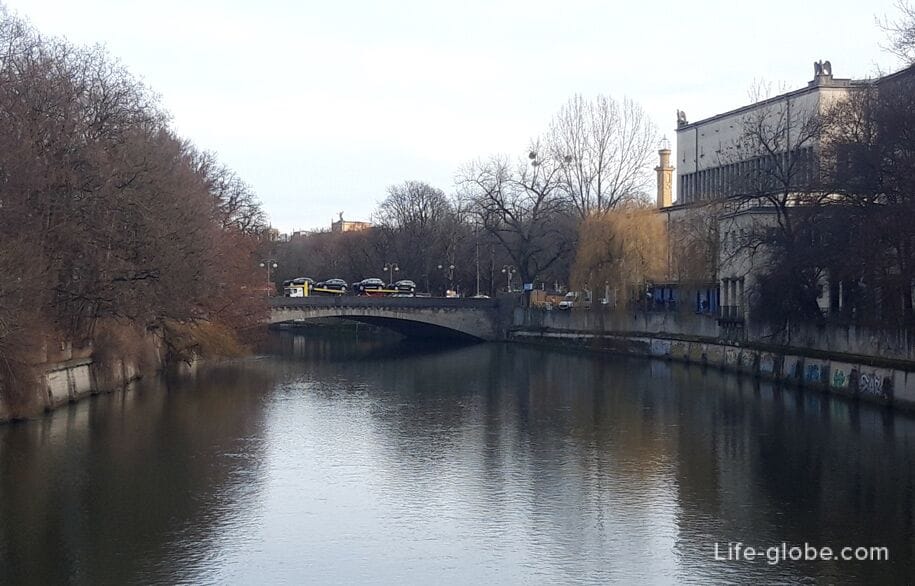
- Eastern part of the bridge - outside Ludwigsbrucke leads from Museum island across the Small ISAR (Kleine Isar) to the street Rosenheimer straße underground station (Rosenheimer Straße).
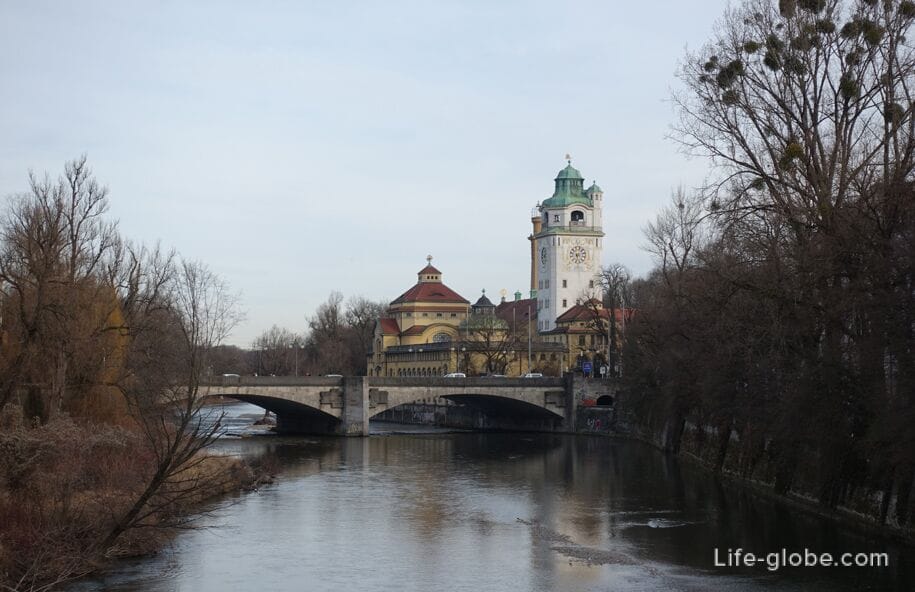
One of the pylons designed by Karl Hocheder, was destroyed during the Second world war. The remaining three pylons with allegorical sculptures placed today in the Western side of the bridge Ludwig.
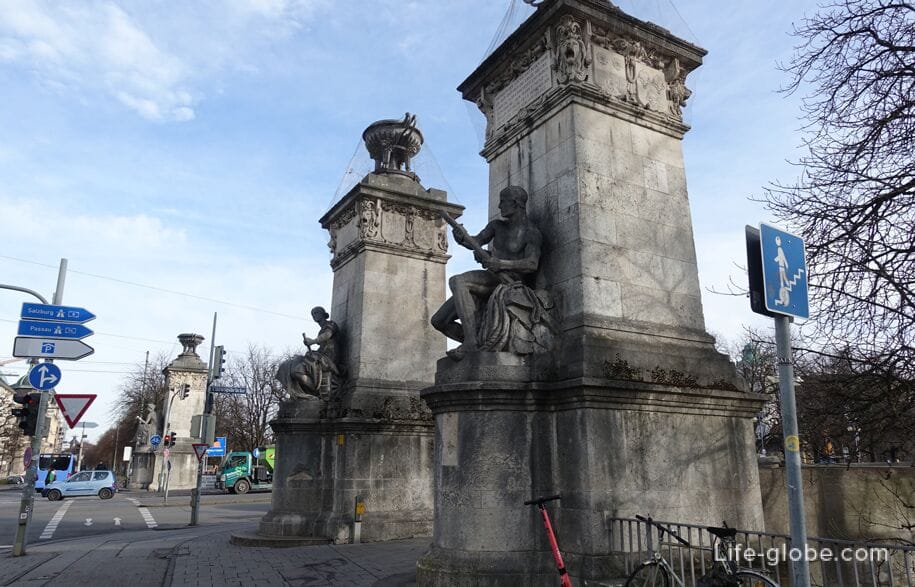
The bridge itself is Ludwig carriageways. Also on the bridge are two paths, one on each side of the bridge.
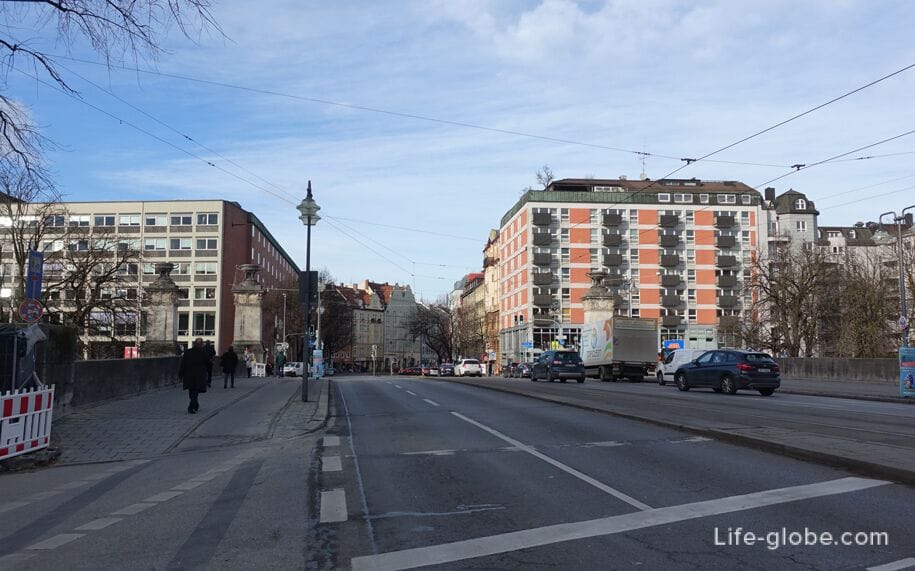
A view of the bridge of Ludwig's from the South
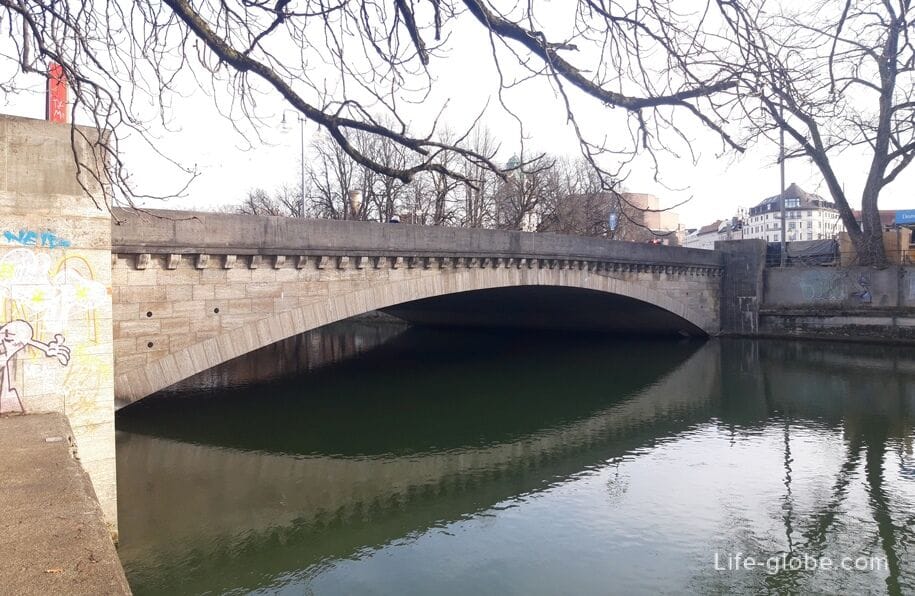
The view from the Ludwig bridge to the South: partially visible from the Museum island and the bridge Bosch (Boschbrücke).
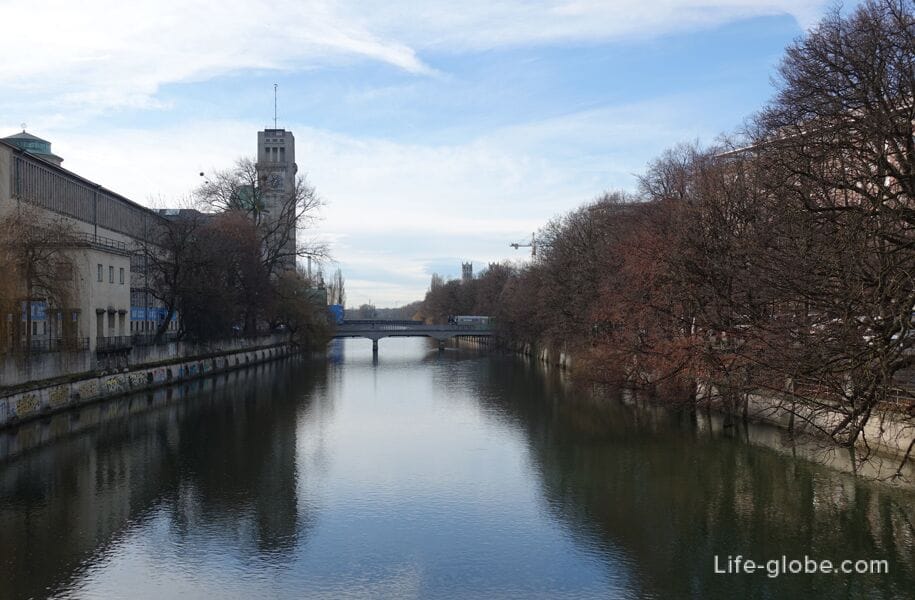
The view from the inner part of the Ludwig bridge to the North: partly visible to Museum island and a pedestrian bridge Marianne (Mariannenbrücke).

From the Ludwig bridge, in the Northern part of the Museum island, you can see the fountain of Father Rhine (Vater-Rhein-Brunnen / Vater-Rhein-Brunnen), which is decorated with a sculpture of the God of the river Rhine.
The fountain was created by the Munich sculptor Adolf von Hildebrand between 1897 and 1903 years for the city of Strasbourg, where the fountain was located on the square were Brogli.
During the French invasion of Strasbourg in 1918, the fountain was destroyed, survived only a part of the sculpture. Later, the bronze sculpture was purchased back in Munich and in 1932 installed on the fountain in its current location.
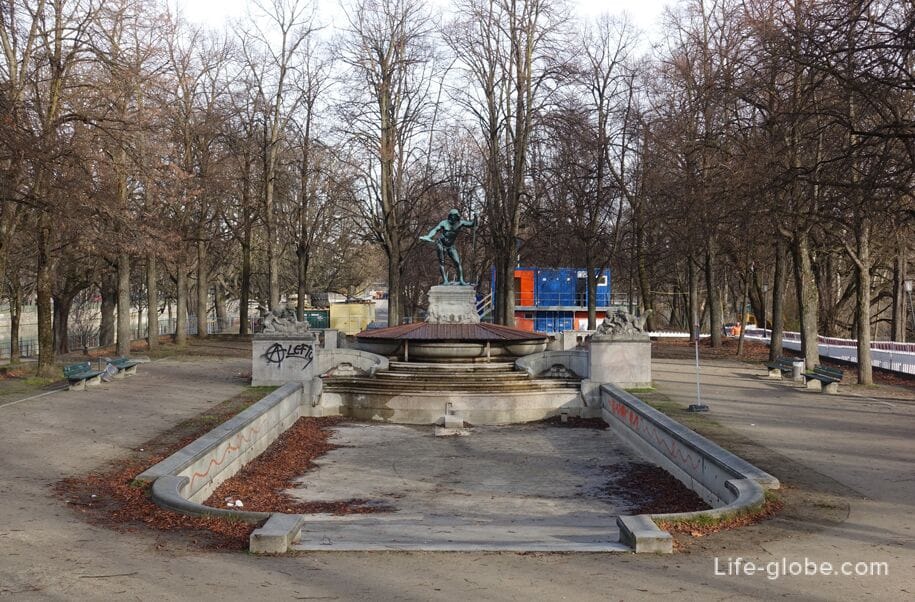
The view from the outer part of the Ludwig bridge to the North: partly visible to Museum island, a pedestrian bridge of Kaballah (Kabelsteg), and the historic Mullerova baths (Müller sches Volksbad), located on the North-Eastern side of the bridge Ludwig.
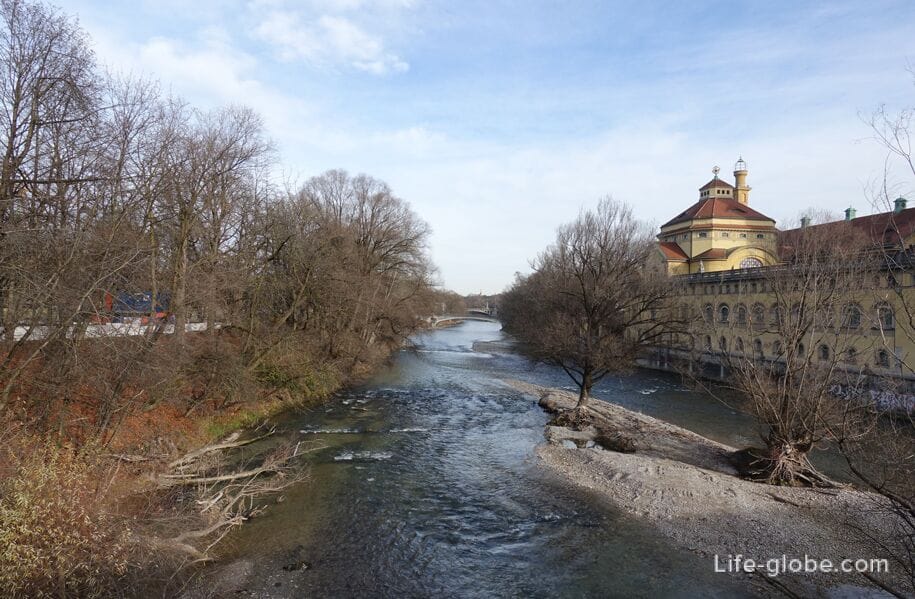
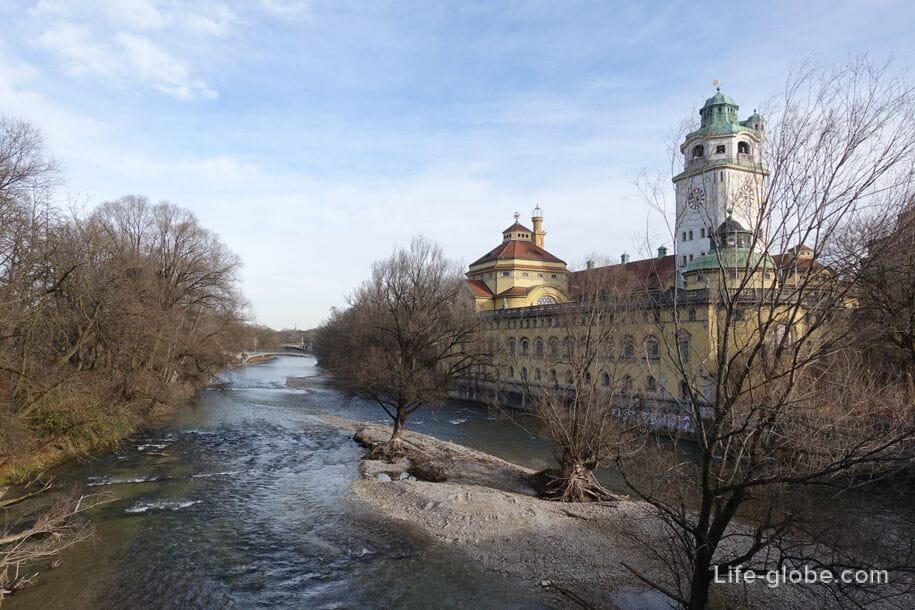
Mullerova city baths were built as a public bath complex with a swimming pool in 1901 in art Nouveau style (Jugendstil in German) with Baroque elements.
The walls of the building are now: two indoor swimming pools, a steam room and an outdoor patio, bistro, restaurant, pub, massage services and a hairdresser. Read more about Mullerova baths...
